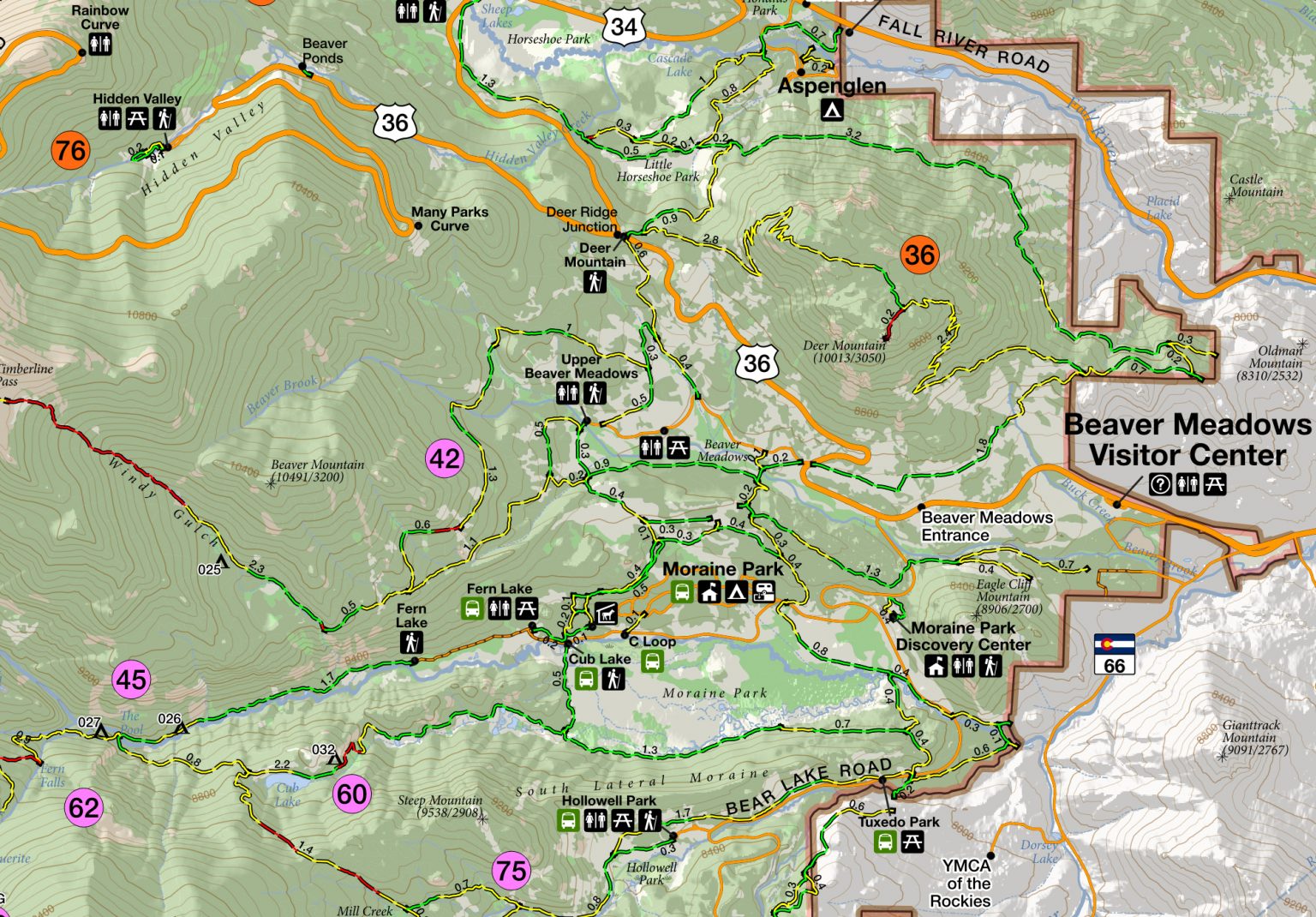Best maps for hiking are crucial for a safe and enjoyable outdoor adventure. This guide delves into the various types of hiking maps available, from traditional topographic maps to digital GPS applications, comparing their strengths and weaknesses across diverse terrains and conditions. We’ll explore essential map features, symbols, and navigation techniques, empowering you to confidently select and utilize the ideal map for your next hike.
Understanding map features like elevation contours, scale, and symbols is paramount. We’ll provide a step-by-step approach to selecting the right map for your specific hike, considering factors such as difficulty, length, and location. Furthermore, we’ll address the advantages and disadvantages of both paper and digital maps, guiding you towards making an informed decision based on your needs and preferences.
Types of Hiking Maps
Choosing the right map is crucial for a safe and enjoyable hiking experience. Different maps cater to different needs and preferences, each offering unique advantages and disadvantages depending on the terrain and conditions. Understanding these differences will help you select the most appropriate map for your next adventure.
Topographic Maps
Topographic maps are detailed representations of the land’s surface, showing elevation changes through contour lines. These lines connect points of equal elevation, allowing hikers to visualize hills, valleys, and slopes. They also typically depict features such as rivers, roads, and trails. The level of detail varies depending on the map’s scale; larger-scale maps offer greater precision.
Trail Maps
Trail maps prioritize hiking trails, often simplifying the terrain details. They usually display trail names, distances, and points of interest along the trails, making them easy to follow. While they may not show the detailed elevation changes of topographic maps, they provide a clear overview of the trail network in a specific area.
GPS Maps
GPS maps, often viewed on smartphones or dedicated GPS devices, utilize satellite technology to pinpoint your location. They provide real-time navigation, showing your current position and guiding you along a chosen route. Many GPS maps also integrate topographic or trail map data, offering a combined view of terrain and trail information.
Comparison of Map Types
The choice between topographic, trail, and GPS maps depends heavily on the specific hiking situation. Below is a table summarizing their key characteristics:
| Map Type | Advantages | Disadvantages | Best Use Cases |
|---|---|---|---|
| Topographic Map | Detailed elevation information; shows terrain features precisely; useful for planning routes and assessing difficulty. | Can be complex for beginners; requires understanding of contour lines; may not show all trails. | Backpacking trips in remote areas; navigating challenging terrain; planning routes with significant elevation changes. For example, navigating a challenging mountain pass in the Rockies would greatly benefit from the detailed elevation information provided by a topographic map. |
| Trail Map | Easy to understand; focuses on trails; shows trail names, distances, and points of interest. | Limited terrain detail; may not show elevation changes accurately; less useful for off-trail navigation. | Day hikes on well-marked trails; exploring established trail networks in parks or forests. For instance, a trail map would be ideal for a day hike on the Appalachian Trail, clearly showing the trail’s route and distance. |
| GPS Map | Real-time location; navigation assistance; can integrate other map data; useful in poor visibility. | Requires electronic device and battery; susceptible to signal loss; can be inaccurate in dense forests or canyons. Furthermore, reliance solely on GPS can lead to navigational errors if the device malfunctions. | Navigation in unfamiliar areas; tracking progress; finding your way back to the trailhead; hiking in areas with poor visibility such as fog or snow. For example, a GPS map would be incredibly helpful when navigating a dense forest in the Pacific Northwest where visibility is limited. |
Using Maps Effectively While Hiking
Successfully navigating the trails requires more than just possessing a map; it demands understanding how to use it effectively in conjunction with other navigational tools. This involves proper orientation, landmark identification, and strategic decision-making, especially when encountering challenging terrain.
Orienting a Map and Using a Compass or GPS
Proper map orientation is crucial for effective navigation. Begin by finding a recognizable landmark on your map that you can also see in the real world. Align the map with this landmark, ensuring the map’s north arrow points towards true north (using a compass). Once oriented, your map accurately reflects your current position and the surrounding terrain. A compass provides true north, crucial for precise orientation, particularly in areas with limited visibility or indistinct landmarks. GPS devices offer a more precise location, supplementing the map by providing coordinates and often displaying your route on the map itself. Using both a map and compass together reduces reliance on a single technology, mitigating the risk of device failure. For instance, if your GPS malfunctions, the map and compass can guide you back to the trail.
Following a Trail and Identifying Landmarks
Following a trail using a map involves consistently checking your location against the map’s depiction of the trail. Identify landmarks shown on the map – such as rivers, prominent hills, or significant changes in elevation – and locate their real-world counterparts. This constant cross-referencing ensures you stay on course. For example, if the map shows a sharp bend in the trail approaching a rocky outcrop, you should expect to see that feature ahead. By consistently comparing map features to the actual landscape, hikers can confidently follow even unmarked or poorly-maintained trails.
Navigating Challenging Terrain
Navigating challenging terrain, such as dense forests or steep slopes, demands careful map reading and compass work. Before embarking on such a hike, thoroughly study the map, identifying potential obstacles and alternative routes. Using the compass to maintain bearing, even when visibility is low, is crucial. For instance, when hiking through a dense forest with limited visibility, a compass can keep you on a chosen azimuth, preventing you from getting lost. Regularly checking your location on the map and identifying landmarks helps confirm your progress and makes course corrections easier. Precise map reading and compass skills are essential for safely traversing difficult terrain.
Step-by-Step Guide to Map and Compass Navigation
- Obtain a suitable map and compass: Ensure the map is up-to-date and covers the area you plan to hike. A reliable compass is essential.
- Plan your route: Study the map beforehand, identifying your starting point, destination, and any potential obstacles.
- Orient the map: Find a recognizable landmark, align the map’s north arrow with true north using your compass.
- Determine your location: Use landmarks to pinpoint your position on the map.
- Select a bearing: Using your compass, determine the bearing (direction) to your next landmark or destination.
- Follow the bearing: Walk in the determined direction, regularly checking your compass and map to confirm your progress.
- Identify landmarks along the way: Regularly compare your surroundings with the map to confirm your location and make course corrections as needed.
- Recheck your position: Periodically stop and re-orient your map and compass to ensure you are still on course.
Map Maintenance and Care
Proper map maintenance is crucial for ensuring accurate navigation and prolonging the lifespan of your valuable hiking resource. A well-maintained map will serve you faithfully on countless adventures, while a neglected one risks becoming illegible and useless. Understanding how to store, handle, and repair your maps will significantly improve their longevity and reliability.
Proper storage and handling techniques protect your maps from damage and ensure their continued usability. This involves safeguarding them from moisture, extreme temperatures, and physical wear and tear.
Storage and Protection
Storing hiking maps correctly is essential for preventing damage. Ideally, maps should be kept in a cool, dry place away from direct sunlight and moisture. A dedicated map case, portfolio, or even a sturdy, resealable plastic bag offers excellent protection. Avoid storing maps in areas prone to temperature fluctuations or humidity, as these can cause warping, fading, or even mold growth. For long-term storage, consider using archival-quality plastic sleeves or folders to further protect the maps from deterioration. Regularly checking your maps for any signs of damage, such as creases or tears, allows for timely intervention.
Handling Maps in Various Weather Conditions
Using maps in inclement weather requires extra care. Before heading out, consider laminating your map or placing it inside a waterproof map case. If neither is available, a plastic bag can offer some protection, though it may reduce visibility. When consulting the map in the rain, try to minimize direct exposure to water. If the map does get wet, gently blot it dry with a soft cloth, avoiding rubbing, which can further damage the paper. Allow it to air dry completely before storing it. Avoid using a hairdryer or other heat source as this can cause damage. In snowy conditions, keep the map protected inside your clothing or backpack to prevent it from getting wet or freezing.
Repairing Minor Tears or Damage
Minor tears or creases can often be repaired easily. For small tears, use a strong, transparent tape such as archival-quality tape, carefully applying it over the tear to reinforce the paper. Avoid using regular adhesive tape, as it can leave a sticky residue and potentially damage the map over time. For larger tears, you might consider using a specialized map repair tape or taking the map to a professional map repair service. Creases can sometimes be smoothed out by carefully placing the map between two sheets of absorbent paper and gently pressing on the crease with a flat object. Remember to be gentle to avoid causing further damage.
Digital vs. Paper Maps
The choice between digital and paper maps for hiking presents a compelling trade-off between convenience and reliability. Both offer unique advantages and disadvantages, and the optimal choice often depends on the specific hiking conditions and the hiker’s preferences and priorities. Understanding these differences is crucial for planning a safe and enjoyable outdoor experience.
Choosing between digital and paper maps involves weighing the benefits of readily available information and interactive features against the risks of technology failure and the simplicity of a reliable, non-electronic alternative.
Digital Map Advantages and Disadvantages
Digital maps, primarily accessed through smartphones or GPS devices, offer several advantages. They provide real-time location data, often incorporate topographic details, and can integrate with other apps for navigation and tracking. However, reliance on technology introduces potential drawbacks. Battery life is a significant concern, and signal loss in remote areas can render the map useless. Furthermore, the initial investment in a suitable device and the ongoing cost of data plans must be considered. Unexpected app malfunctions or software updates can also disrupt navigation.
Paper Map Advantages and Disadvantages
Paper maps, while seemingly antiquated, offer undeniable advantages in their simplicity and resilience. They require no power source, are unaffected by signal loss, and are not subject to software glitches or battery depletion. Their tactile nature allows for easy annotation and planning. However, paper maps lack the real-time location data and interactive features of digital maps. They can be cumbersome to carry, are susceptible to damage from the elements, and require pre-planning and familiarity with map reading skills.
Situations Favoring Specific Map Types
In situations with unreliable cellular or satellite signal, such as deep canyons or heavily forested areas, paper maps are significantly more reliable. For well-maintained trails with readily available cell service, a digital map offers greater convenience and the ability to access real-time information about weather, trail conditions, and points of interest. Hikers undertaking long-distance treks or exploring unfamiliar terrain might benefit from carrying both types of maps for redundancy. For instance, a seasoned hiker navigating a well-known trail might rely primarily on a digital map, while a novice exploring a remote wilderness area should prioritize a paper map as a backup.
Digital vs. Paper Map Comparison
| Feature | Digital Map | Paper Map | Considerations |
|---|---|---|---|
| Real-time Location | Yes | No | Crucial for navigation in unfamiliar terrain; less critical on well-marked trails. |
| Topographic Detail | Often High, Variable by App | Generally High, Depends on Map Quality | Accuracy and level of detail vary depending on the source and scale. |
| Durability | Susceptible to damage from water and impacts if device is not ruggedized. | Relatively durable, but susceptible to tearing and water damage. | Consider protective cases for devices and waterproof map containers. |
| Power Requirements | Requires charged device | None | Battery life is a major concern in remote areas. |
| Cost | Initial device cost plus potential data plan fees. | Initial purchase cost only. | Consider the long-term cost of maintaining and updating digital devices. |
| Ease of Use | Intuitive for most users, but requires learning specific app functions. | Requires map reading skills. | Consider prior experience with map reading and technology. |
Illustrative Examples of Maps
Understanding different map types is crucial for successful navigation during a hike. The following examples illustrate the key features and information presented in various hiking maps. These examples highlight the differences between topographic, trail, and detailed hazard maps, emphasizing the importance of selecting the appropriate map for your specific hiking needs.
Topographic Map of a Mountainous Region
A topographic map of a mountainous region would depict the terrain using contour lines to show elevation changes. These lines connect points of equal elevation, with closely spaced lines indicating steep slopes and widely spaced lines representing gentler inclines. The map would clearly show mountain peaks, valleys, ridges, and saddles. Trails would be marked, often with their names and difficulty levels indicated. Key features such as rivers, lakes, and significant landmarks (like viewpoints or shelters) would also be identified with symbols. For example, a map of the Appalachian Trail section through the White Mountains might show Mount Washington’s peak elevation, numerous trails leading to its summit, and the steep, rocky terrain surrounding it, all represented by closely packed contour lines. The map would also indicate the presence of streams and potentially dangerous areas like cliffs, represented by specific symbols and contour line patterns.
Trail Map of a Forested Area
A trail map of a forested area focuses primarily on the trail network itself. It would display the various trails, indicating their names, direction, and approximate distances between junctions. Points of interest along the trails, such as campsites, viewpoints, historical markers, or water sources, would be clearly marked. Distances between key points are often shown, allowing hikers to plan their journey and estimate travel time. A trail map of a national park, for example, might highlight different loops, connecting trails, and the overall layout of the trail system. It might also differentiate between easy, moderate, and difficult trails based on their gradient and terrain. Distances between trailheads, campsites, and other landmarks would be indicated numerically.
Detailed Map of a Challenging Trail Section
A detailed map illustrating a challenging section of a trail would provide a close-up view of a specific area, highlighting potential hazards. This could include steep inclines, exposed sections, river crossings, or areas prone to rockfalls. The map would likely use a larger scale to accurately represent the terrain’s features and any obstacles. Navigation considerations, such as trail markers, waypoints, and significant landmarks, would be prominently displayed. For instance, a map showing a particularly treacherous section of a mountain pass might highlight the exact location of exposed cliffs, indicating the need for caution and potentially specific safety measures. The map might also indicate the presence of loose scree or areas with poor footing, thereby informing hikers about potential hazards and necessary precautions.
Last Recap
Ultimately, choosing the best map for hiking boils down to understanding your needs and the specific characteristics of your planned route. Whether you opt for the detailed accuracy of a topographic map, the convenience of a digital app, or the simplicity of a trail map, mastering map reading and navigation skills will significantly enhance your hiking experience, ensuring safety and allowing you to fully appreciate the beauty of the trail ahead. Proper map selection and usage are key to a successful and memorable hike.




